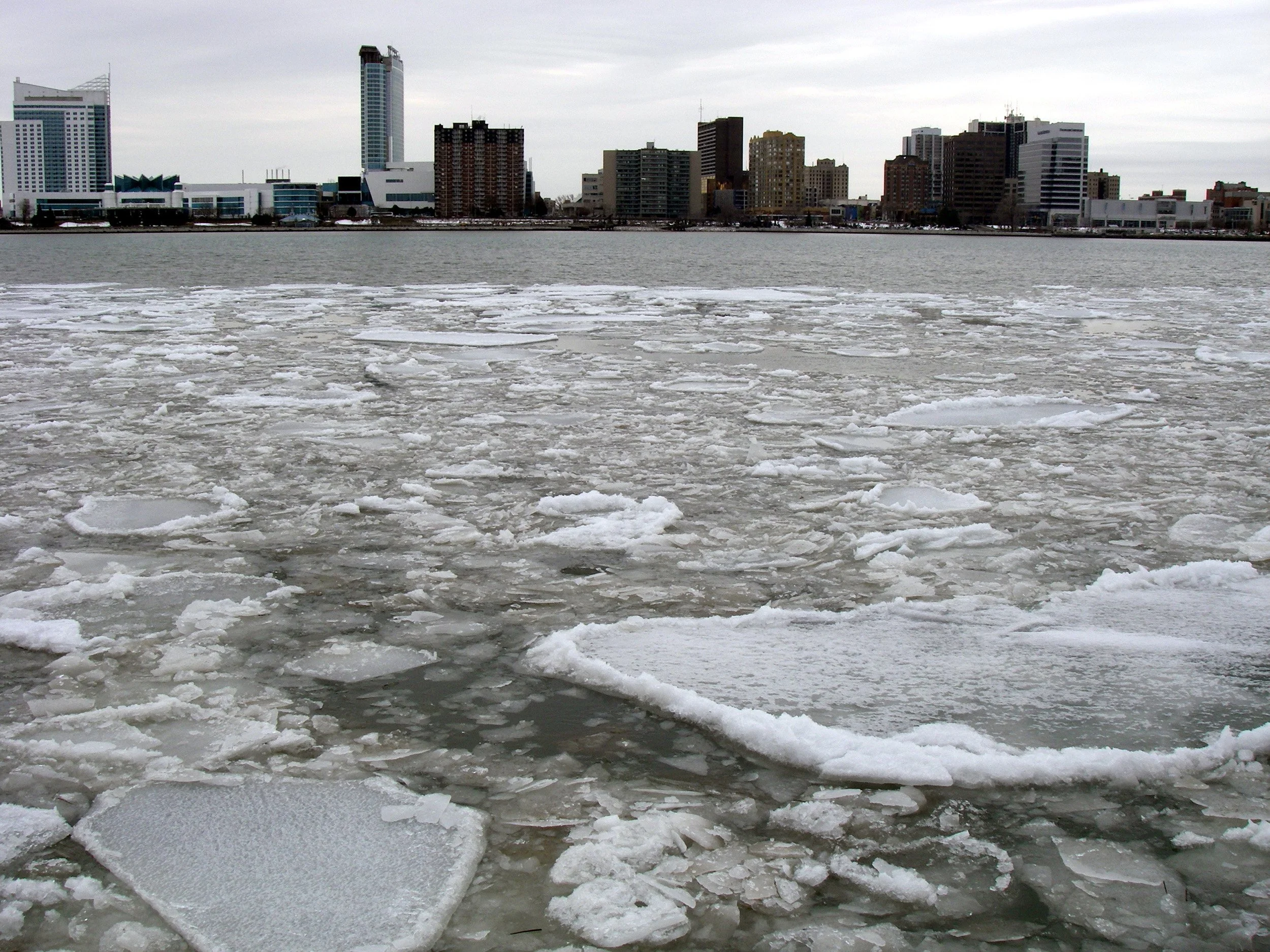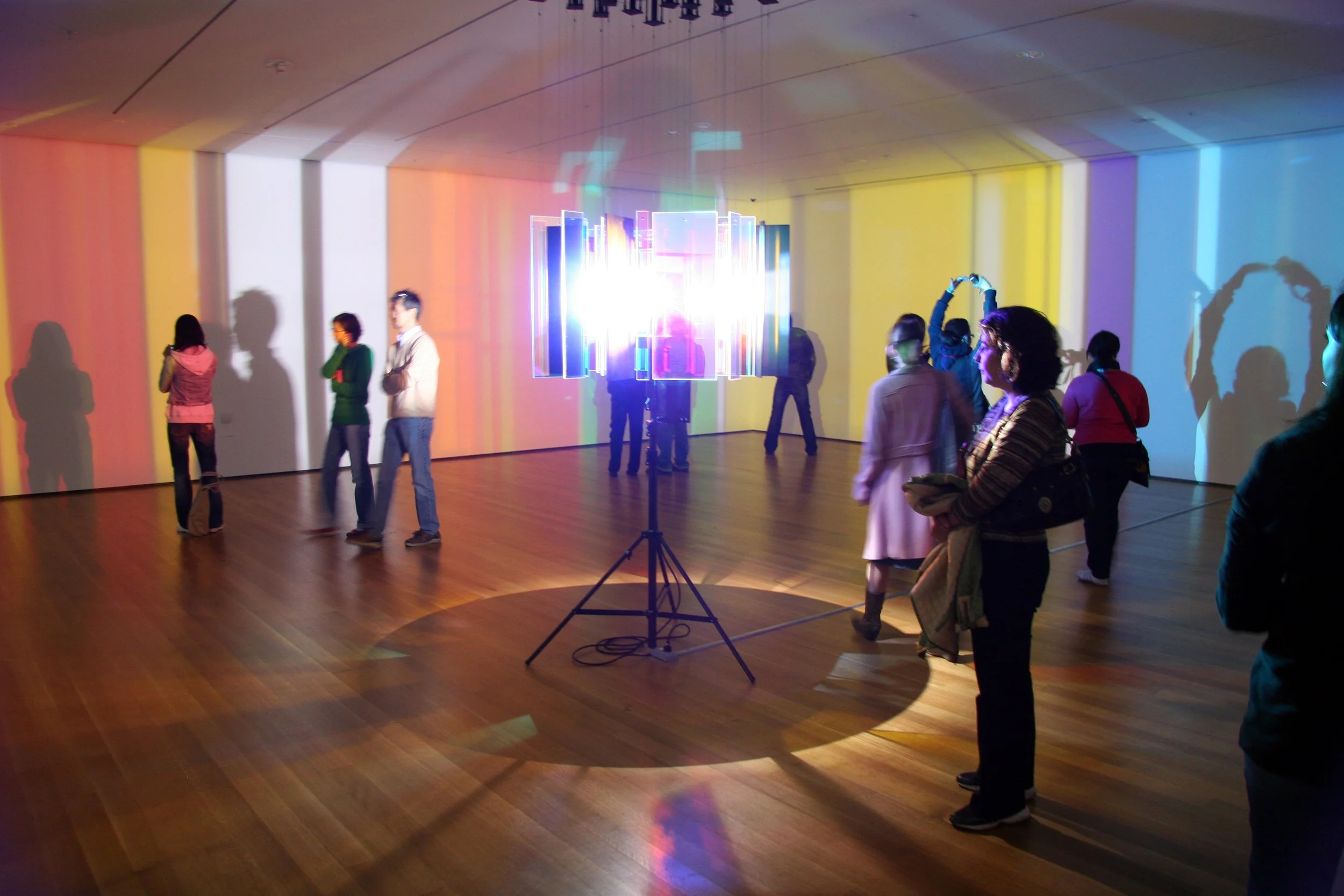
Page 2 of 5
Cranbrook, Michigan
Hey hey hey mother interstate, can you deliver me from evil, make me honest, make me wedding cake
While Detroit's downtown may have been largely left to die this past century, there's still lots of car money in the area and in the city's affluent outer suburbs. Chief among them (at least in terms of both wealth and architectural significance) is Cranbrook, home of the Cranbrook Art Academy where Eliel Saarinen taught, where Eero Saarinen started and where Florence Knoll, Charles Eames and Ray Eames studied. The Art Museum and Library is at the center of the campus and was designed by Eliel himself (the same guy who also designed the iconic central railway station in Helsinki, among other buildings). While there the museum hosted a wonderful and surprisingly busy temporary exhibit on the work of Eero Saarinen, including terrific large scale interior models of the TWA Terminal, Dulles Airport and the Gateway Arch. If you missed the show in Cranbrook (and you did) there's no need to panic, the same exact exhibition just opened at the far closer National Building Museum in Washington. You have until August 23rd so start making plans now.
The collection at the Detroit Institute of Arts was surprisingly good though it paled in comparison to its five star attraction, a truly wonderful full room sized mural called "Detroit Industry" by none other than Diego Rivera himself. Rivera is locally famous for having painted the murals inside the lobby of the RCA/GE/NBC Building at 30 Rockefeller Plaza and then having them painted over when the Rockefellers realized that Rivera had thrown in Trotsky and Lenin for good measure. Rivera had a similar scare in Detroit, although his questionably leftist mural was ultimately saved by Henry Ford's influential son Edsel. The mural itself depicts several scenes in and about Ford's infamous River Rouge Plant.
The mural itself fills four walls right in the center of the building and needs to be seen to be believed. When visiting, the museum offers terribly helpful small personal video players which go into depth about the history and meaning of the wonderfully complex piece. In and of itself, the mural is worth a trip to Detroit. Really.
The Henry Ford (Museum) is a true five star attraction and deserving of whatever hype it can get. The complex consists of a historical village (which was closed when I was in Detroit during hockey season), a sprawling, all over the place museum and tours of the nearby, legendary Ford River Rouge plant where, unfortunately, photography was strictly prohibited (something about industry secrets or UAW safety or something, it's hard to remember). Anyway if photos were allowed, you would be looking at image after image of an actual working assembly line that produces Ford F150 pickup trucks as you watch and wait. Visitors to the plant have access to a catwalk that overlooks just about every aspect of the assembly line where you can gaze at real union workers (and the occasional non union robot) assemble part after part, truck after truck. It's a totally fascinating experience and worth a trip to Detroit. Really
The collection at the actual museum is all over the place and far more than just Ford cars. There are multiple presidential cars (including the one where JFK was killed), the chair where Lincoln was shot, the bus where Rosa Parks wouldn't move to the back, a stable of trains and planes, a thoroughly inappropriate mannequin fully tricked out in a KKK outfit and at least one car that looks suspiciously like a hot dog.
And while I remain a fan of the museum, I strongly disagree with the Ford people's decision to call their complex "The Henry Ford" as opposed to, well, anything else. Still the name does make me think of my (still) second favorite book, Aldous Huxley's classic and (often) profane novel "Brave New World." The book takes place in a dystopian future where Henry Ford is worshipped as a god, where characters go out of their way to regularly say "Our Ford" instead of "Our lord."
As an architect, one of my favorite pieces inside the actual museum was Buckminster Fuller's Dymaxion House, the only surviving example of his dream of cheap, mass produced, easily moveable, futuristic looking homes. The plan of the house is (very) circular, the aeronautic friendly materials include a lot of aluminum and the feel is somewhere between a diner and the Jetsons. Sadly Fuller's dream was short lived, despite a marketing push, absolutely no Dymaxion Houses were ever sold although two prototypes were lived in by one of the company's owners. Both altered houses eventually were donated to the Henry Ford and then combined and restored in order to create a single, presentable survivor and a tantalizing glimpse into a world that never was.
Every year for some time now, I have been taking my father to a hockey game for his birthday. Toronto, Montreal, Boston, Washington DC, Chicago, Ottawa, Pittsburgh and (this year) Detroit. I had thought about going to Detroit for quite some time, their team (the Red Wings) is one of the NHL's original six teams, their arena is the oldest operating arena in the league and the city shamelessly markets itself on the Red Wings' ice as Hockeytown. What kept me back for these many years was more the thought that (unlike Toronto or Chicago or even Pittsburgh) there was really nothing to do in Detroit other than the game. The truth is that I was wrong and there is actually stuff to do although none of it is particularly well advertised- there is barely a chamber of commerce and hardly a single brochure available once you actually get there. Even when listing the top 30 things to do in Detroit, the hotel's in room promotional guide named leaving Detroit and going to Canada as number 3.
Still despite the city's low esteem and horrible, horrible reputation, there were things to do and places to see. This picture shows the General Motors World Headquarters as if it was some type of matte painting floating just above the Renaissance Center's atrium. The building was designed in the late 1970s by John Portman, the generally low regarded architect who designed the Marriott Marquis Death Star in New York and (who despite his reputation) can design a dramatic space just as well as anyone who ever tried.
The rest of downtown included a circling monorail/people mover, a lot of skywalks, a fair amount of empty lots, some amazing still surviving older buildings and the thoroughly recommendable Hockeytown Bar and Grill, located right across the street from Comerica Field but still a decent walk from any real hockey.
The Red Wings play at Joe Louis Arena, conveniently located on the waterfront and people mover route in downtown, in a building with reasonably good sightlines and totally inadequate amenities. Maybe it's the tight concourses, maybe it's the generally subpar food (my father said the dollar hot dogs were severely overpriced) or more likely it's the fact that they have yet to upgrade to urinals from troughs in the shockingly undersized mens room, but you get the feeling that the league's oldest arena is in real need of at least a little attention.
Meanwhile the game itself was fine, a low scoring 1-0 overtime Red Wings victory over the Nashville Predators on the day the team celebrated Gordie Howe's 80th birthday. Just another day in Hockeytown.

